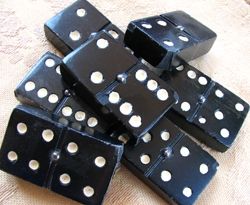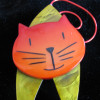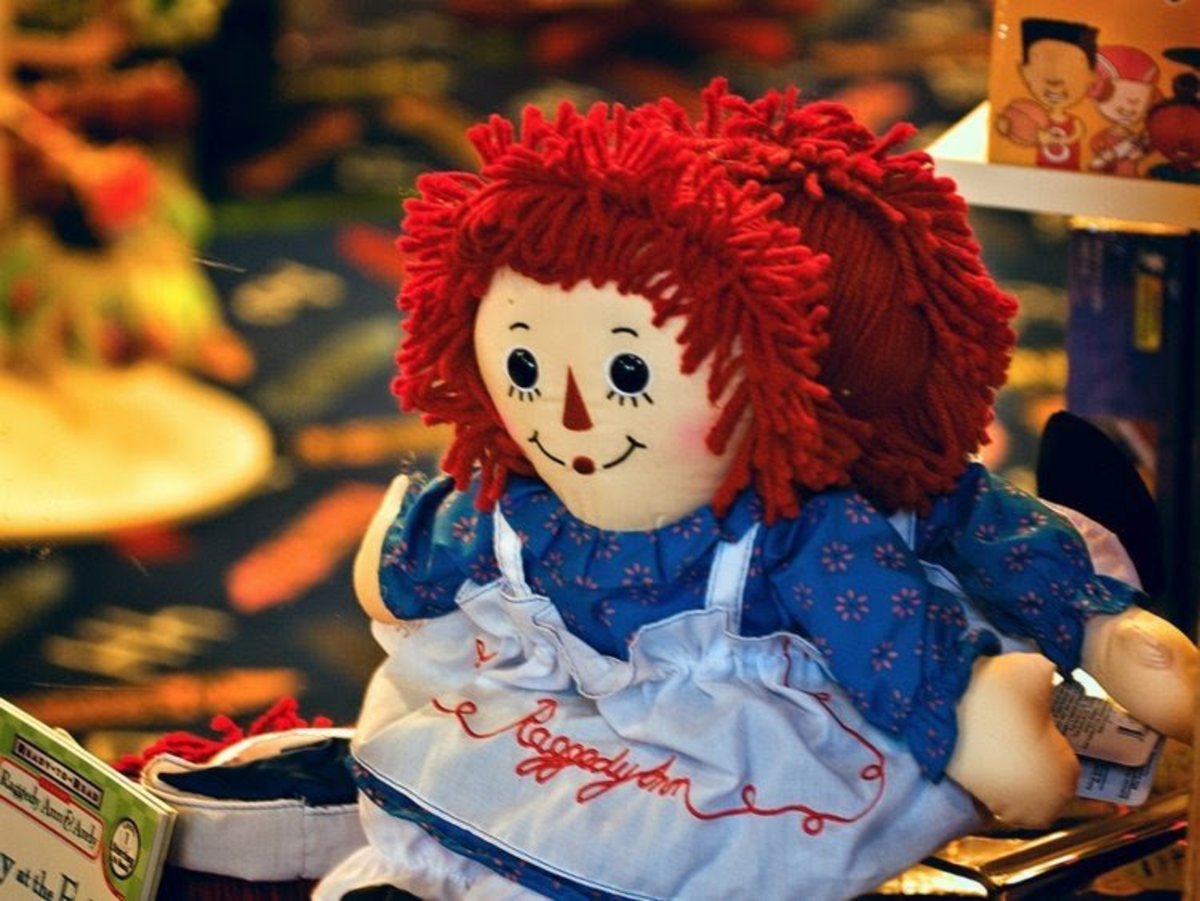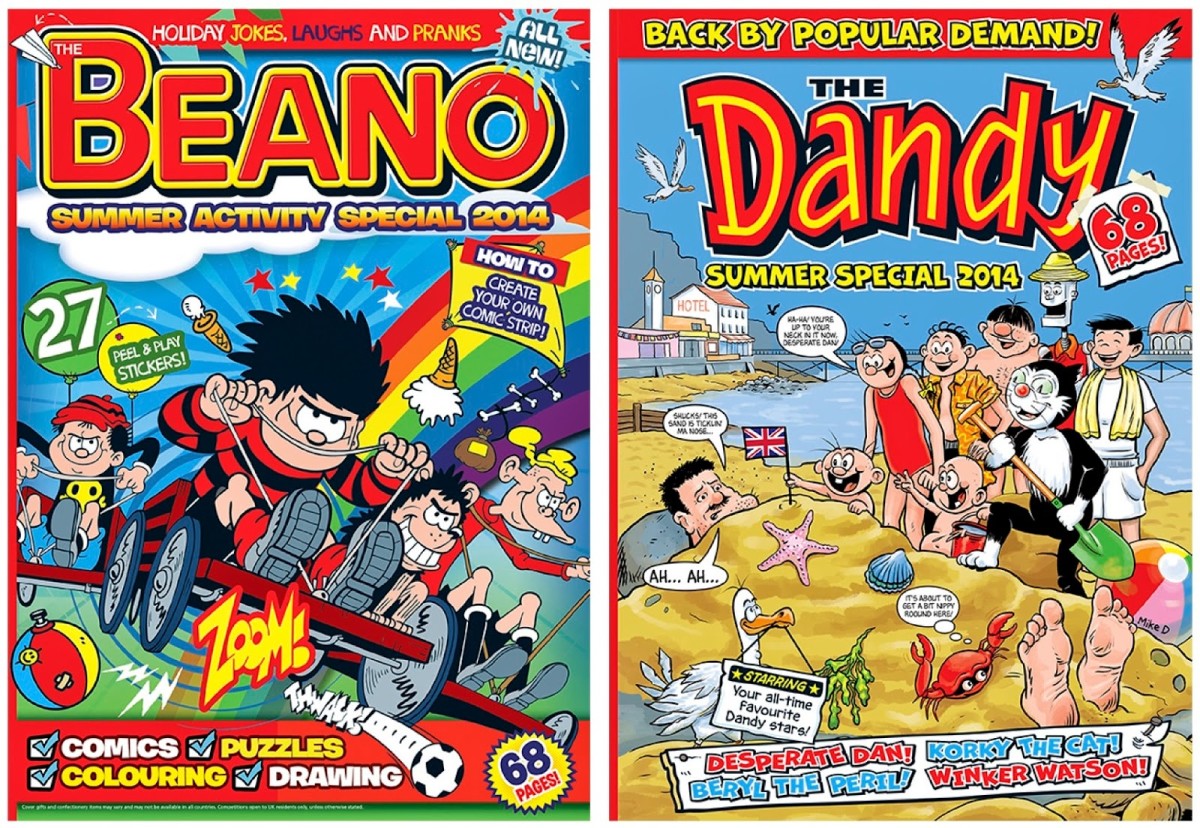Classic Toys of the National Toy Hall of Fame

National Game & Puzzle Week and the National Toy Hall of Fame
Barbie dolls, dominoes, Play-Doh and a stick. What do all of these all have in common? They are inductees at the National Museum of Play in Rochester, New York. Every year, during National Game and Puzzle Week (the third week of November) two classic toys are honored with a place in the National Toy Hall of Fame, and a week long celebration of play at the museum..
Classic toys are recognized for their enduring appeal and importance to childhood creativity and development. Check out the list of the current inductees. If you don't see your favorites, or disagree with their choices, you can submit your favorites for consideration in next year's award ceremony.
Teddy Bear photo by Diane Cass

Dominoes and Star Wars Action Figures
Winners for 2012
For 2012, the National Museum of Play has honored the old and the new.
DOMINOES: Dominoes have been around since the 1300's. Invented in China, the game was originally played with two dice. Dominoes evolved in Europe to the tile form we know today, with blanks mixed with pips (the little dots). No one knows who first stood dominoes on their ends, lined them up and pushed them over, but it is both popular and a competition event. The Netherlands hosts a "Toppling" event every year where millions of Dominoes are toppled in fantastic displays.
STAR WARS ACTION FIGURES: The introduction of the movie "Star Wars" in 1977 changed not only the movie industry, but the toy industry forever. The first Star Wars action figures came out in 1978, and movie related actions figures have been created for popular moves ever since.

A Blanket, Dollhouse and Hot Wheels
Winners of 2011
BLANKET: A blanket is probably one of the most ancient of childhood toys, from warm animal skins to the first wooly blankets made by our ancestors. My own son was a "Linus" with a blanket that he loved from the time he was a baby, all the way up into his first school years. A blanket evokes strong feelings of comfort and security, but is also a catalyst for creativity, becoming a bride's veil, a secret fort or the cape of a super hero.
DOLL HOUSE: A dollhouses have delighted children since the 1500's. Children play out social roles and work out problems though their imaginary families and friends. They explore architecture and design aesthetics through play. Working with small items promote fine motor skills and dexterity.
HOT WHEELS: Hot Wheels were created to appeal to young boys dreaming about driving their own cool car one day. The first models mirrored popular muscle cars of the day, such as the Corvette, Firebird and Barracuda. The cars were built for speed, had actual spring suspension and flexible modular tracks for racing and creative construction.
Domino Toppling Display
2008 to 2010
- 2010 Playing Cards: Popular around the world, playing cards have their origin in China, India and Egypt. There are more variations of games you can play with cards than with any other toy.
- 2010 The Game of Life: The game of life is fun for all ages. Created in 1950 for the 100 year anniversary of Milton Bradley, it has remained a popular to each new generation. It imitates real life, with choices you make on things like; going to college or becoming a tradesman, marriage and kids or not. You learn about taking risks, rewards and consequences as well as luck.
- 2009 A Ball: A ball is a toy loved by children the world over. Children can play alone or play games in groups, leaning about rules and sportsmanship.
- 2009 Big Wheel: Since 1960, Big Wheels have been thrilling adventurous youngsters with it's speed and maneuverability. With a lower center of gravity, kids no longer tipped over during sharp turns and other stunts, making them safer and funner than tricycles.
- 2009 Nintendo Game Boy: Game boy changed the way people play games forever. Games were now portable, and could be enjoyed anywhere.
- 2008 Baby Doll: Baby dolls appeared in the mid 1800's and began a new era in dolls. Dolls prior to this were primarily used as companions, for tea parties and fashion dress-up. With the introduction of baby dolls, little girls (or boys) now had a small charge to take care of, cuddle and love like a real baby. Baby dolls encourage nurturing and compassion in children.
- 2008 Skateboard: Skateboards arose out of calm seas. When ocean was too calm for surfing,, surfers attached wheels to small boards so that they could still practice their moves. Today's skateboards are faster and more maneuverable than those early boards, and can be customized to show personal style.
- 2008 Stick: Sticks may be the oldest and most loved toy of all. Humans are also, not the only ones that enjoy sticks. Other animals play with sticks as well. Sticks become swords, rocket ships, flutes and something to toss to your dog for a game of fetch. They can be juggled, beaten in rhythm or used as an art implement to draw in the sand. The world over, as stick is a toy as close as the nearest tree.
2004 to 2007
- 2007 Atari Game System: Atari changed the way people play, forever. They are not the first company to create a video game system, but they made it popular, with games like Pac-Man, Space Invaders and Frogger.
- 2007 Kite: Invented in China, kites have been enjoyed for over 3,000 years. Simple to make, and fun to fly, kites are fun for everyone.
- 2007 Raggedy Andy: Raggedy Andy joined his sister, Raggedy Ann this year. He has been a popular toy since 1930.
- 2006 Easy Bake Oven: My most happy Christmas as a kid was when I received an Easy Bake Oven. Oh the happy times of making cake with a light-bulb. Since 1963, this marvelous little oven has been delighting children and inspiring a new generation of pastry chefs.
- 2006 Lionel Model Trains: Lionel Trains started as a store display in 1900. When Joshua Lionel Crown's customers wanted the trains, and not the other product they were supposed to help sell, Lionel Trains was born. Lionel Trains paid attention to exacting details, made smooth running tracks, had varying speed transformers and slick marketing. All these combined to make Lionel trains the most desired Christmas gift for boys for almost a century. A pink train created for girls flopped.
- 2005 Candyland: Candyland was the invention of Eleanor Abbott, who wanted to provide a pleasant pastime for children inflicted with polio. Her idea was submitted to Milton Bradley, at the urging of her friends, and Candyland became one of the favorite games of childhood.
- 2005 Cardboard Box: Who has NOT played with a box as a kid? My siblings and I regularly absconded with boxes and built them into forts, pirate ships and castles. They also made terrific stages for our puppet theater we regularly put on. Any box was fair game, but large appliance boxes were the best.
- 2005 Jank-In-The-Box: Jack-in-the-Box has been around since the 1600's, but early versions were often scary, not humorous. They were meant to frighten children. As attitudes toward children changed, so did "Jack". He became a friendly, smiling clown or fuzzy animal, meant to bring smiles, not fright. Small children, especially, delight in the surprise, even when they know what is coming.
- 2004 Rocking Horse: Rocking horses have been around since the 16th century. Early rocking horses were more like cradles. In the 18th century, they became more like the versions we know today, but were elaborately carved, and often covered with real horse hide and had manes and tails of real horsehair. They have remained a fixture of childhood since Victorian times.
- 2004 Scrabble: Scrabble was created during the Great Depression by Alfred M. Butts, and architect. With little work, and time on his hands, he created a new game he called Lexiko. It was a flop and changed names and owners many times before ending up with Hasbro. It grew in popularity over time, creating devoted followers of the game. It promotes learning as well as easy socializing during game-play...a winning combination for games that last.
2001 to 2003
- 2003 Alphabet Blocks: Alphabet blocks have been around since the late 1600's. A philosopher, John Locke, said that children learn through play. The alphabet began appearing on carved, brightly painted blocks that could be stacked or arranged in pleasing patterns by the child. They have become a standard instrument of play and learning in nearly every child's toy box and at early learning centers.
- 2003 Checkers: The game of checkers is centuries old. The first strategy guide for checkers were published in the early 1600's. Checkers can be a deluxe game made of hand carved wood or stone, or cut corncobs and a grid scratched in the dirt. People enjoy it's easy playability, social interaction and strategy...ll the hallmarks of a game that lasts the test of time.
- 2002 Jigsaw Puzzle: The jigsaw puzzle was invented by British map maker, John Spilsbury, in 1760. He mounted a map to a board and it into pieces that could be taken apart and put together again. Puzzles became a popular pastime in Britain, but spread slowly. Early puzzles where primarily used as learning tools, teaching geography, history or religion. After the Civil War, Milton Bradley began making puzzles with more entertainment value. The Great Depression saw a boom in puzzles, as they became cheaper and people had time on their hands. People enjoy the challenge of puzzles and they promote higher intelligence functions, like spacial reasoning.
- 2002 Raggedy Ann: Raggedy Ann was born in 1915, when Johnny Gruelle's daughter brought him a rag doll. Being a cartoonist and illustrator, he took a pen and drew a smiling face on the doll. In 1918, he wrote a book about "Raggedy Ann" and sold the dolls along with the books. It was a great marketing success, which grew into over 20 books and the addition of her brother, Raggedy Andy.
- 2001 Silly Putty: Silly putty was the result of a happy accident. It grew out of a search for a rubber substitute during World War II. It's odd behavior, acting both as a liquid and a bouncy solid, never found use for war, but it became a fun party novelty. The 1959's brought it to market and the Silly Putty craze began. It has been packaged in plastic eggs every since it's introduction at Easter time
- 2001 Tonka Trucks: Tonka Trucks have been a name known for durability and quality since the late 40's. The teachers that birthed the company, originally meant to manufacture garden tools. When they acquired a competing company, a toy steam shovel came with it. After success in selling toys, they abandoned the garden tool idea and solely focused on toys. They have been a great source of imaginative play for young boys ever since.
Yo-Yo Trick Master
1998 Inaugural Year Honoree Classic Toys
The very first year of the Toy Hall of Fame,, the National Museum of Play honored 11 toys. All subsequent years only honored a few. See if you agree with the museums first choices of toys to honor.
- Barbie was born from a mother watching her daughter pl.ay with paper dolls. She decided that it would be more fun for a little girl to dress up a doll that looked like a three dimensional grown-up doll, rather than flat babyish ones. So, Ruth Handler (co-founder of Mattel) created Barbie. Barbie flew off the shelves in 1959 and has been popular ever since.
- Crayola Crayons were invented in 1900 from grease sticks, in response to teacher's complaints about the quality of chalk. The name comes from the French words for "chalk" (craie) and "oil" (olea). They were introduced to the public in 1903 and have remained a strong seller, worldwide ever since. New colors are introduced to much fanfare and old ones get new names as societal sensibilities change, like "Indian Red" becoming "Chestnut"
- .The Erector Set grew out of the Industrial Revolution and construction craze of the early 1900's. Society was advancing and Erector sets taught young boys the principals of industry, engineering and construction. over the years, a simple construction set could be amended with gears and motors to create motor driven vehicles and even robots.
- Frisbee -In the late 1800's college students from Yale and other nearby universities played catch with pie plates from the nearby Frisbee Baking Company. In 1948, Walter Morrison created a flying disc out of plastic with a rolled edge called the "Morrison slope" that caught the air and held the disc aloft. He sold it at county fairs. It has gone through several owners and different names, but came back around to "Frisbee" in 1955 when Wham-O bought the rights. It is now owned by Mattel with casual and competitive games for both people and dogs have been invented for Frisbee around the world.
- LEGOS-LEGOS were invented in 1949 by a Danish carpenter. He envisioned a system of blocks that allowed for multiple ways to connect and build with a little imagination. In 1958 they were patented into the variable, interlocking bricks we know today. LEGOS have been praised as proof that children are not just sponges, but can reason and make organized decisions. They promote problem solving and creative play. Over 320 billion bricks have been sold since it's inception, with spin-offs of popular video games and now even cartoon shows for kids.
- Marbles -Stone or clay made the earliest marbles, but glass now defines what marbles are. Marbles have been played since the times of the ancient Egyptians, and remain a popular game of skill and chance with both children and grown-ups. Gameplay has inspired a language all it's own, with "shooters", "cat -eyes", "commoneys" and "alley taws". Older marbles are greatly valued by collectors and enthusiasts of all ages.
- Monopoly -Monopoly started life as the Landlord's Game in 1904 as a statement of social inequity between the "haves" and "have-nots". Instead, players delighted in the greedy acquisition of money and property at the expense of their opponents. Over time the game was tweaked and in 1934 it was brought to market by Charles Darrow. Players could now amass properties and raise rents by building improvements, creating a "monopoly" of the board. Milton Bradley bought rights to the game in 1935. The game was originally created with the street names of Atlantic City, New Jersey. Today, there are versions available from major cities around the world, movie themed games and you can even had one custom made to your own specifications.
- Play-Doh -Play-Doh began life as wallpaper cleaner. Upon hearing about teacher's laments that modeling clay was too hard for little hands to manipulate, Joe McVicker discovered that his wallpaper cleaner was a good substitute. It was provided Play-Doh to the schools in Cincinnati, Ohio at first, but rave reviews and word of mouth quickly increased demand elsewhere. It was later marketed to the public in bright colors. Play-Doh remains a popular toy for youngsters, as well as an educational tool therapeutic tool.
- Teddy Bear -The 1902 the hearts of Americans were touched by the story of their beloved president, Teddy Roosevelt, sparing an injured and caught bear on a hunting trip. A cartoonist changed it to a baby bear. A Brooklyn immigrant from Russia, Morris Mictom, sewed a bear and called it "Teddy's Bear", with the president's permission. The Teddy Bear was born and has been popular with both children and adults ever since.
- Tinker Toys -Tinker Toys were invented when 1910 when a couple of stonemasons observed children building with sticks, pencils and old thread spools. Tinker Toys included holes on the sides of the spools as well as the center allowing for greater versatility in the creative building process








